Mar 11, 2015 | Book Reviews
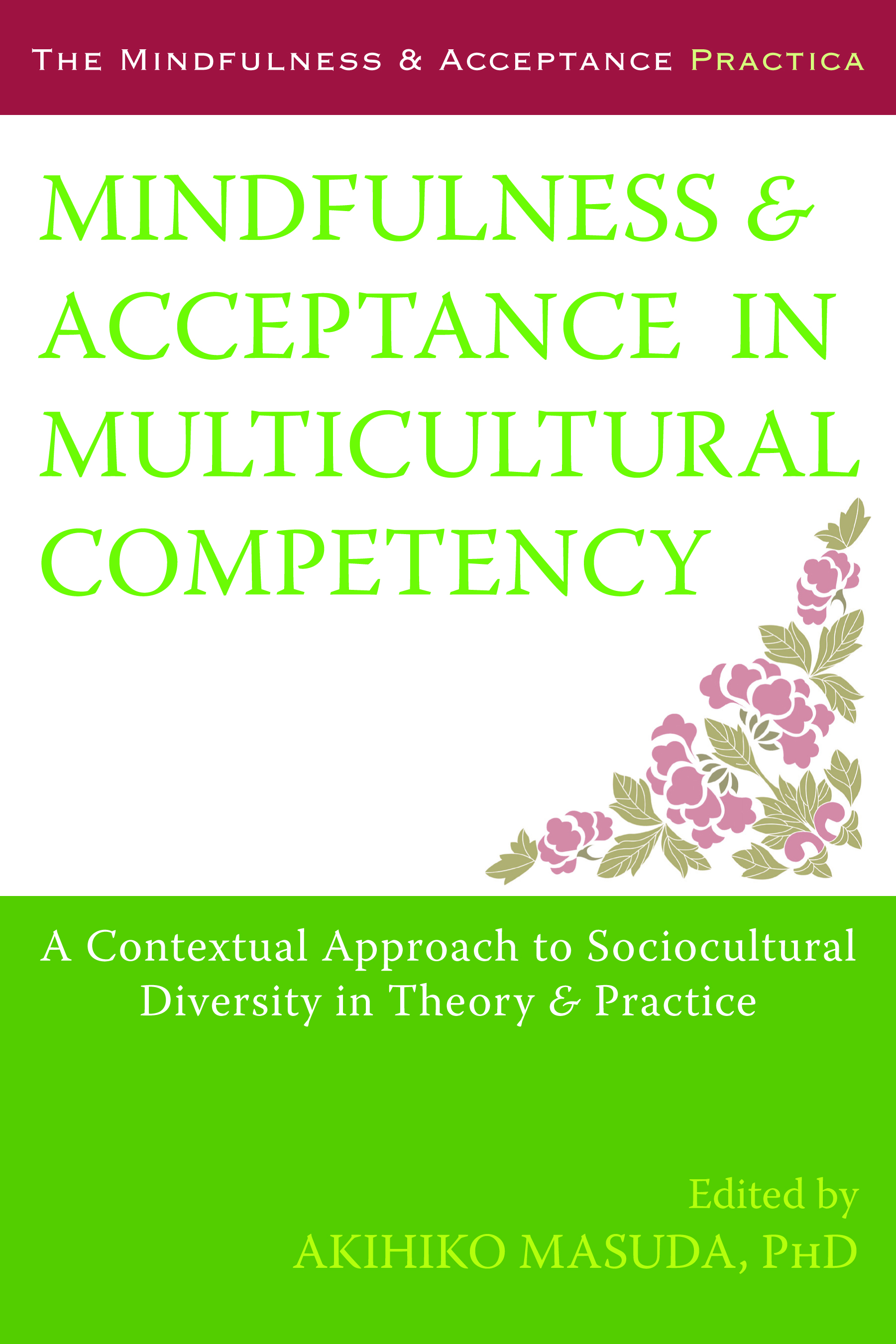 Mindfulness and Acceptance in Multicultural Competency by Akihiko Masudo is part of The Mindfulness and Acceptance Practica series. This groundbreaking volume focuses on a contextual approach to multicultural theory and practice. With the emergence of new cognitive and behavioral therapies that integrate mindfulness and acceptance principles, this book represents a significant contribution to the exploration of how these principles account for culture and diversity, the particular ways in which acceptance and mindfulness-based methods can be adapted culturally through specific evidenced-based approaches, and the application of mindfulness and acceptance to some issues commonly linked to the experience of diversity.
Mindfulness and Acceptance in Multicultural Competency by Akihiko Masudo is part of The Mindfulness and Acceptance Practica series. This groundbreaking volume focuses on a contextual approach to multicultural theory and practice. With the emergence of new cognitive and behavioral therapies that integrate mindfulness and acceptance principles, this book represents a significant contribution to the exploration of how these principles account for culture and diversity, the particular ways in which acceptance and mindfulness-based methods can be adapted culturally through specific evidenced-based approaches, and the application of mindfulness and acceptance to some issues commonly linked to the experience of diversity.
Part I of the book addresses the complexity of multicultural issues with an emphasis on how mindfulness and acceptance principles, which are based on a functional-context perspective, represent a valid alternative to the classic content-based approach (awareness, knowledge and skills) in promoting multicultural competence. As such, the contributors argue that in order to understand and promote cultural competency, there is a need to develop a functional contextualism, which demands an understanding of the moment-by-moment and relational nature of the counseling experience, as well as an acknowledgment that both counselor and client are contextual beings.
Part II of the book focuses on the cultural competency and cultural adaptation of Dialectical Behavior Therapy, Mindfulness-Based Cognitive Therapy, and Acceptance and Commitment Therapy. A central premise of this section is that these approaches are functional, contextual and process-focused, and as such, they facilitate cultural competency. The book presents specific examples of how these therapies can be contextually adapted to the client’s sociocultural background.
Part III of this volume illustrates the use of mindfulness- and acceptance-based principles and interventions in general contexts of multicultural practice and training, as well as in addressing specific issues. The beginning of this section illustrates the cultural adaptation of mindfulness- and acceptance-based approaches for non-English speakers. The authors’ main point is that the adaptation of intervention protocols, rather than simply attending to issues of content, must attend to the functional and contextual reality of the clients. The next part of this section focuses on the use of mindfulness and acceptance principles in multicultural competency training. The authors’ basic premise is that acceptance- and mindfulness-based approaches can reduce responses that interfere with multicultural training and lead to intrinsic motivation for developing multicultural competency. The rest of this section focuses on how mindfulness and acceptance principles and interventions can be used to address specific issues associated with the experience of diversity such as spirituality, prejudice and shame. The contributors’ main ideas reflect the need to emphasize the common ground between prominent spiritual traditions and acceptance- and mindfulness-based therapies, the importance of increasing psychological flexibility, the relevance of focusing on the verbal processes that underlie stigma rather than its content, the importance of promoting intrinsic and prosocial anti-stigma actions, and the need to integrate compassion-based interventions that promote quality of life.
As a whole, this book represents a valuable addition to the classic content-based approaches to building multicultural competency. Mindfulness and acceptance principles are highlighted as useful tools in the process of understanding and conceptualizing cultural issues. Mindfulness- and acceptance-based approaches are examined based on their cultural competency as well as their great potential for multicultural adaptation. Finally, mindfulness and acceptance principles and interventions are presented as significant resources for facilitating change in the context of issues that are relevant to specific minorities.
In general, the authors succeed in illustrating the enhancing role that mindfulness- and commitment-based principles and interventions have in the process of conceptualizing and developing cultural competency. Their demonstration of the adaptability of specific approaches is valuable but somewhat limited, mostly due to the low availability of research and experience related to the implementation of these approaches with diverse populations. In my opinion, this volume’s greatest contribution is its illustration, with specific case examples, of the groundbreaking potential that mindfulness- and commitment-based principles and interventions have in the change process of those affected by issues such as stigma, discrimination and prejudice.
Reviewed by: Raul Machuca, Barry University, Miami Shores, FL.
Masuda, A. (Ed.). (2014). Mindfulness and acceptance in multicultural competency. Oakland, CA: New Harbinger.
https://tpcwordpress.azurewebsites.net
Mar 11, 2015 | Book Reviews
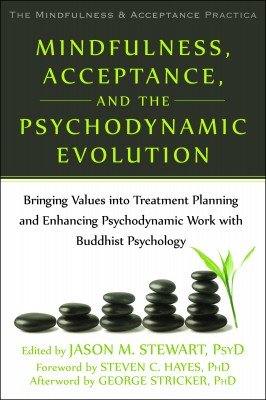 Mindfulness, Acceptance, and the Psychodynamic Evolution (2014) is a theoretical blending of mindfulness-based theory and contemporary psychodynamic thinking, a book with much to offer counseling professionals. The text begins with a foreword, preface and introduction, that describe the evolution of third wave cognitive-behavior therapy (e.g., acceptance and commitment therapy, dialectical behavior therapy), as well as current theory in psychodynamic therapy (e.g., functional analytic psychotherapy, relational psychodynamic perspectives). The authors then move to describing the role of theory integration, and posit mindfulness as a common therapeutic factor.
Mindfulness, Acceptance, and the Psychodynamic Evolution (2014) is a theoretical blending of mindfulness-based theory and contemporary psychodynamic thinking, a book with much to offer counseling professionals. The text begins with a foreword, preface and introduction, that describe the evolution of third wave cognitive-behavior therapy (e.g., acceptance and commitment therapy, dialectical behavior therapy), as well as current theory in psychodynamic therapy (e.g., functional analytic psychotherapy, relational psychodynamic perspectives). The authors then move to describing the role of theory integration, and posit mindfulness as a common therapeutic factor.
Throughout the next chapters, the authors expand on the psychodynamic perspective and mindfulness in addition to the role of curiosity in the therapist’s stance in session and the therapeutic relationship. Particularly poignant are chapters 3, 4 and 5, which are almost exclusively devoted to Buddhist thought and its connection to modern mindfulness and psychodynamic theory. Chapter 6 describes the concept of mentalization and mindfulness, with connections for enhancing mentalization in children through play therapy. Chapter 7 contains a personal account of mindfulness practice from one of the authors. Chapters 8–10 focus heavily on the functional contextual theories of acceptance and commitment therapy and dialectical behavioral therapy, and their associations with mindfulness and psychoanalysis. Chapter 11 guides the reader through the nuances of both psychoanalysis and acceptance and commitment therapy, with the authors providing commentary from both perspectives applied to clinical case vignettes. The concluding chapter, 12, describes the five guidelines of functional analytic psychotherapy. This chapter also includes the role of values and a discussion of relational psychodynamic thought.
Throughout this text, modern psychodynamic theory is applied to mindfulness concepts, which include acceptance, nonjudgmental awareness, curiosity, letting go and the power of the present moment. The philosophical epistemology of mindfulness and psychodynamic theory are included within the text, with respect to individuals’ unique social construction of their contexts. There are roughly 18 separate clinical case scenarios included within this text, which the authors use to skillfully demonstrate the topics of each chapter.
Mindfulness, Acceptance, and the Psychodynamic Evolution is a well authored text; each individual contributor adds more to the narrative and enhances the reader’s experience. Regardless of whether one’s theoretical orientation falls within the psychodynamic framework, every clinician has something to gain from reading this book. The blossoming research on mindfulness within the field of counseling demonstrates the importance of the topic, and reading this book is a worthwhile venture. The text is very thorough, with delicate care taken to provide the reader with a wealth of accessible information. A strong point of Mindfulness, Acceptance, and the Psychodynamic Evolution is the outstanding number of case studies included, which provide both the conceptual framework and strategies for clinical application.
As stated above, a counselor need not subscribe to a psychodynamic theoretical orientation to benefit from this text; however, the book does contain information on advanced modern psychodynamic theory and mindfulness. If the reader is opposed to psychoanalytic thinking or unaware of its concepts, the reading experience may be more difficult to comprehend. However, the authors adeptly deconstruct the specifics of modern psychodynamic and mindfulness concepts, making comprehension of psychodynamic and mindfulness theories possible for readers less experienced in either theory.
This text has direct application for various types of counseling professionals, particularly those with clinical, supervisory and consulting roles. The authors provide the conceptual narrative germinated with clinical case vignettes, perfect for therapists providing direct client services. Mindfulness, Acceptance, and the Psychodynamic Evolution includes cases with children, adolescents and adults, furthering the utility of the book.
Stewart, J. M. (Ed.). (2014). Mindfulness, acceptance, and the psychodynamic evolution: Bringing values into treatment planning and enhancing psychodynamic work with Buddhist psychology. Oakland, CA: New Harbinger.
Reviewed by: George E. Harrington III, Barry University, Miami, FL.
The Professional Counselor
https://tpcwordpress.azurewebsites.net
Mar 11, 2015 | Book Reviews
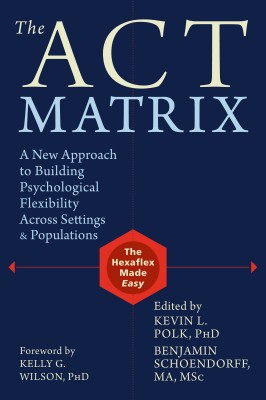 The ACT Matrix: A New Approach to Building Psychological Flexibility Across Settings and Populations is a refreshing user-friendly book that transforms a somewhat esoteric theoretical framework (Acceptance and Commitment Therapy, or ACT) directly into an accessible therapeutic tool for counselors. Kevin Polk and Benjamin Schoendorff present a very practical edited text that features contributions from authors who share their direct experiences with using an accessible version of ACT in their work with a variety of clients and presenting concerns.
The ACT Matrix: A New Approach to Building Psychological Flexibility Across Settings and Populations is a refreshing user-friendly book that transforms a somewhat esoteric theoretical framework (Acceptance and Commitment Therapy, or ACT) directly into an accessible therapeutic tool for counselors. Kevin Polk and Benjamin Schoendorff present a very practical edited text that features contributions from authors who share their direct experiences with using an accessible version of ACT in their work with a variety of clients and presenting concerns.
The book begins with a history of the matrix, which in essence is a versatile version of ACT. ACT is a philosophical and theoretical framework that, simply put, is designed to help clients live with (rather than eradicate) troubling psychological symptoms, while at the same time acting in a way that brings meaning and purpose to their lives. While ACT is an evidenced-based practice that has shown great utility across a variety of therapeutic arenas, its main tenets can prove challenging for those who (a) have been trained to help clients eliminate maladaptive symptomology and/or (b) prefer a structured set of helping skills that follow a predictable pattern. For these reasons, I sometimes caution graduate counseling students against using ACT too soon in their professional careers, prompting them to revisit ACT when they (a) are no longer encumbered by their own internal perfectionistic conflicts and (b) are ready for a system of helping that meets clients in the midst of their pain, and helps them to accept their current circumstances rather than trying to avoid them. At least, these were my standard set of cautions; but now I can recommend the matrix.
To quote the book itself, “The matrix is an interactive diagram for increasing psychological flexibility in almost any context at any time” (Polk & Schoendorff, 2014, p. 1). After discussing the origins of the matrix and the underlying principles of ACT, the editors turn to experts in a variety of clinical arenas who have successfully adapted the matrix in their work with clients. These clinicians share their expertise in using the matrix with presenting issues such as addictions, chronic pain, eating disorders, chronic and severe disorders (e.g., depression, anxiety, self-destructive behaviors), and post-traumatic stress disorder (PTSD). In addition to the examples of these presenting concerns, the book offers practical implications for using the matrix in such setting as couples counseling, psychiatric practice and case consultation. The authors even dedicate chapters to using the matrix with the general public, in the school systems and in the business world. Using a variety of clinical case studies, easy-to-follow (and replicate) graphics, and step-by-step instructions, the authors lead the reader in very practical exercises that can be used directly with struggling clients.
The ACT Matrix would be appropriate to use with graduate students in a variety of courses, including those that are fairly general (e.g., diagnosis and treatment, advanced counseling skills, clinical experience courses such as practicum and internship) as well as those that are more clinically specific (e.g., addiction counseling, couples counseling, crisis/trauma counseling). For practicing clinicians looking to build their professional competence in order to work with clients who appear to be stuck in the experience of their symptoms, The ACT Matrix offers numerous exercises that will prove to be quite effective.
Reviewed by: W. Bryce Hagedorn, NCC, MAC, University of Central Florida, Orlando, FL.
Polk, K. L., & Schoendorff, B. (Eds.). (2014). The ACT Matrix: A new approach to building psychological flexibility across settings and populations. Oakland, CA: New Harbinger.
The Professional Counselor
https://tpcwordpress.azurewebsites.net
Mar 11, 2015 | Book Reviews
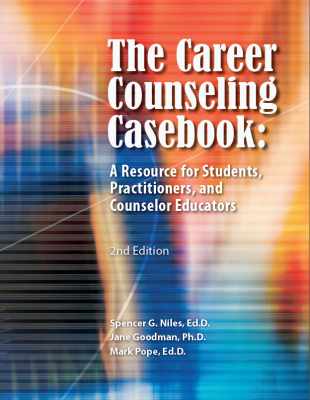 The Career Counseling Casebook, edited by Spencer G. Niles, Jane Goodman and Mark Pope, is a second-edition compendium of vignettes that encompass virtually all aspects of career counseling. The editors address all areas of life–career development within a wide range of contexts, and present these areas to represent lifespan career development issues for work with clients of all ages. Case contexts include elementary, secondary and higher education; vocational and rehabilitative counseling; and agency, nonprofit and private practice environments.
The Career Counseling Casebook, edited by Spencer G. Niles, Jane Goodman and Mark Pope, is a second-edition compendium of vignettes that encompass virtually all aspects of career counseling. The editors address all areas of life–career development within a wide range of contexts, and present these areas to represent lifespan career development issues for work with clients of all ages. Case contexts include elementary, secondary and higher education; vocational and rehabilitative counseling; and agency, nonprofit and private practice environments.
Responses to each case are provided by leaders throughout the counseling profession, who present varying perspectives on the issues presented in the cases. The responses are not textbook-style theoretical examples. Instead they incorporate integrative approaches that are more realistic and relevant to counselors’ everyday work with clients. Respondents sometimes agree with each other and at other times differ significantly in their approaches to counseling, providing ideal opportunities for discussion with counseling students in either the classroom or as part of internships and supervision.
The new edition of The Career Counseling Casebook addresses contemporary, timely concerns about career from a diverse group of clients. The case descriptions provide adequate background information for each client so that the reader can gain understanding of his or her values and perspective, but the case descriptions also clearly delineate boundaries between career and other types of counseling. The case studies are broadly based and encompass all aspects of diversity, including age, which makes this book an excellent resource for teaching students who are studying all areas of specialization within the counseling profession. The inclusion of a wide range of gender identifications and sexual preferences is particularly valuable in working with counseling students. In addition, the Casebook is a prized resource for career counselors working with the growing number of clients in mid-career and encore careers. Respondents incorporate relevant and timely utilization of assessments into many of the cases. The respondents also provide a multitude of resources that students and practitioners may use to learn more.
A weakness of the Casebook is the lack of consistency in its response format, which makes it somewhat difficult to compare responses across cases. For example, comparing the application of theoretical framework among the cases can be challenging. Also, in one case, a respondent appears to resort to generalizations regarding a client and draws seemingly presumptuous conclusions. A final limitation—maintaining the timeliness and relevance of the cases—is unavoidable, but can be addressed with consistent revisions to The Career Counseling Casebook.
One significant strength of this new resource is that it moves beyond the abstract to the real practice of counseling; the Casebook bridges the gap between the theoretical and clinical applications. The editors integrate theoretical approaches into many cases by presenting them as realistic situations ranging from simple to quite complex. The Casebook reiterates and advances the National Career Development Association’s Career Counseling Competencies Minimum Competencies for Multicultural Career Counseling and Development. Furthermore, the Casebook’s story-telling format is engaging and presents many of the challenges facing career counselors throughout their careers.
Reviewed by: Peggy Dupey, NCC, University of Nevada School of Medicine, Reno, NV.
Niles, S. G., Goodman, J., & Pope, M. (2013). The career counseling casebook: A resource for students, practitioners, and counselor educators (2nd ed.). Broken Arrow, OK: National Career Development Association.
The Professional Counselor
https://tpcwordpress.azurewebsites.net
Mar 11, 2015 | Book Reviews

There have been many studies that point toward parental involvement as the main predictor of student achievement. So, how do we get more parents, teachers and students involved? The authors of this book focus on that question and provide a consultation approach as a possible answer.
The focus of the book is to introduce the reader to the basic concepts, skills and techniques of motivational interviewing (MI) and how this approach can be used as a consultation model for working with parents, teachers and students. The authors provide a unique lens for viewing consultation that is not confined to mental health and substance abuse facilities, but rather concentrated within the school setting. According to a 2013 article by Frey, Sims, and Alvarez, this focus on school-based consultation using MI will only expand in the future.
The authors organize the book in three sections. Part I is an overview of MI, Part II covers the applications of skills and Part III targets the implementation of the approach within other practices. Clearly, the authors are intentional about how the chapters fall within the three parts of the book and build upon one another. The inclusion of the Family Check-Up (FCU) within Chapter 7 emphasizes the importance of a systemic approach to consultation (e.g., family functioning), and integrating this approach with existing evidence-based programs and practices (Chapter 9) is a definite strength.
I was most impressed with the inclusion of examples, stories and practice boxes scattered throughout the chapters. The inclusion of Everyday Conversations about Change and Success Stories helps the reader visualize ways that educational personnel are successful in creating positive change. The authors are patient with the reader and incorporate various practice boxes allowing readers to review new concepts and test their knowledge.
Resources are plentiful throughout this book, and each chapter concludes with handouts that reflect what the chapter reviews (e.g., structured charts, surveys, activities). It is obvious that the authors appreciate the reader and want them to have the necessary tools available to integrate this approach.
The authors seem to generalize the roles of educational personnel within the school setting. The book takes a broad view of consultation and how it might look the same for everyone working with teachers, parents and students. I believe it would be impactful to include examples of specific educational personnel and share how MI could be integrated in different ways within various assigned job roles. One example could include a school psychologist using MI consultation skills with a parent in a conversation regarding the testing and eligibility for exceptional education services. Another might focus on a school counselor using MI techniques with a student discussing college and career planning, or with a teacher sharing ideas of what to include in a response to intervention (RtI) plan. Another example could demonstrate the role of a behavioral specialist using collaborating skills with a student while updating his or her personal behavioral plan. Understanding the distinct roles that individuals have within schools and the relevance of consultation within those roles could be quite valuable for readers.
This book could be used in beginning teacher preparation programs to introduce the key concepts of consultation and the collaborative process within schools. Administrators also could use it as a “book study” to promote a conversation on consultation and collaboration with all school stakeholders, including parents and community members.
Future questions could address how the MI approach to consultation can impact learning and affect outcome measures (e.g., GPA, truancy, graduation rates, enrollment in advanced courses, retention rates). How can the impact of using this technique in the schools become clearer? That is yet another question that must be explored.
Reviewed by: Stacy M. Van Horn, University of Central Florida, Orlando, FL.
Herman, K. C., Reinke, W. M., Frey, A. J., & Shepard, S. A. (2014). Motivational interviewing in schools: Strategies for engaging parents, teachers, and students. New York, NY: Springer.
References
Frey, A. J., Sims, K., & Alvarez, M. E. (2013). The promise of motivational interviewing for securing a niche in the Rtl movement. Children and Schools, 35, 67-70.
Ingraham, C.L. (2000). Consultation through a multicultural lens: Multicultural and cross-cultural consultation in schools. School Psychology Review, 29, 320-343.
The Professional Counselor
https://tpcwordpress.azurewebsites.net
Dec 15, 2014 | Book Reviews
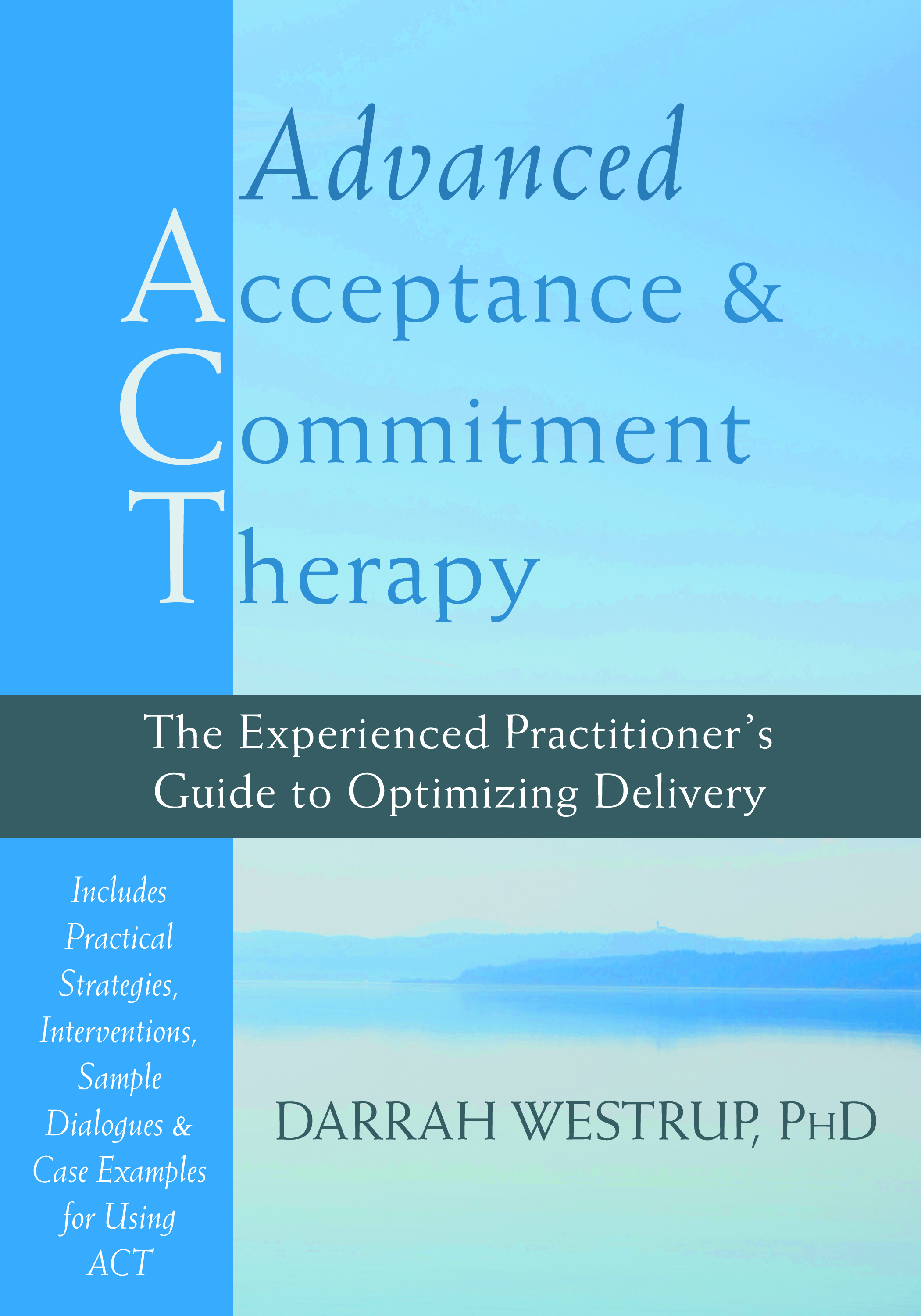 Advanced Acceptance and Commitment Therapy: The Experienced Practitioner’s Guide to Optimizing Delivery is a must-have professional tool for counselors with a working knowledge of acceptance and commitment therapy (ACT). The author approaches core material with the personal and professional acknowledgment that all providers eventually flounder and encounter similar difficulties and pitfalls in using ACT. This text is a toolbox of valuable information.
Advanced Acceptance and Commitment Therapy: The Experienced Practitioner’s Guide to Optimizing Delivery is a must-have professional tool for counselors with a working knowledge of acceptance and commitment therapy (ACT). The author approaches core material with the personal and professional acknowledgment that all providers eventually flounder and encounter similar difficulties and pitfalls in using ACT. This text is a toolbox of valuable information.
Through valuable tips and discussion of real-life client vignettes, Westrup brings the skills of a talented and sensitive therapist/trainer/supervisor to the fore. Her delivery places the reader in the real world of counseling in which ACT philosophy and techniques serve as the working model. Throughout the book, the author repeatedly emphasizes that ACT is based on prescribed principles and that counselors must not, through personal interpretation or embellishment, wander far from these principles.
For any clinical supervisor—whether trained in ACT or not—this book is an excellent how-to guide for the delivery of quality, professional and most importantly, helpful supervision intervention. Westrup provides one of the most readable and useful texts available for understanding supervision as both a science and an art. Through self-disclosure and example, she demonstrates the need for supervisors to be intentional, purposeful and dedicated to ensuring that trainees grow and mature during the supervision process. Westrup’s almost conversational style is the unique and powerful strength of this text. She clearly delivers a succinct message: “Know the ACT delivery model and ensure you stay close to what you know. The theory is the therapy.”
The book is effectively and efficiently structured into three parts. Each is organized to address specific issues that arise in the practice of quality and precise ACT. Westrup structures her writing in the first person, lending a sense of an individualized, one-to-one interchange. She leads the reader to an internal dialogue in a thoughtful, exploratory manner. As one reads, it is easy to almost forget that the setting is not a classroom lecture with a mesmerizing professor following a well-organized, bulleted outline. Westrup’s writing stimulates strong visual and auditory processing. Chapter titles such as “Let’s Talk about Timing,” “Optimizing Your Secret Weapons” and “Curveballs And Consistency” leave no doubt that the writer is an authentic, caring person communicating with a real audience even though the audience is actually one reader at a time.
The illustrative sample dialogues between a therapist and a client serve to illuminate each of Westrup’s points. The reader can imagine watching a master work behind a two-way mirror. Each of the scenarios fits into a step-by-step unfolding of the points in the ACT model and provides a clear discussion of “stay[ing] close to what you know.”
Advanced Acceptance and Commitment Therapy is not a stand-alone training manual for those unfamiliar with ACT theory and practice; however, the author works hard to revisit pertinent points of theory. A key word in her writing is “fidelity.” One must have approved training, supervised practice and theory-specific skills to stay true to ACT and effectively and safely use the principles.
Advanced Acceptance and Commitment Therapy, although specifically aimed at enhancing understanding of ACT and building skills for ACT therapists, can serve as a valuable resource for the entire counseling profession. The writing style alone serves as a refreshing model for potential textbook authors. Its clear, clean flow and precise organization stand in refreshing contrast to the plodding, stuffy tomes that so often become required reading for counselors. As a book written by a supervisor who takes supervision seriously and views the interactive process between supervisee and supervisor as the heart of optimal, honest learning, the text is invaluable. Westrup smoothly puts “practical” into practice.
Reviewed by: J. Dwaine Phifer, NCC, Brassfield Center for Psychotherapy and Personal Development, Greensboro, NC.
Westrup, D. (2014). Advanced acceptance and commitment therapy: The experienced practitioner’s guide to optimizing delivery. Oakland, CA: New Harbinger.
The Professional Counselor
https://tpcwordpress.azurewebsites.net
 Mindfulness and Acceptance in Multicultural Competency by Akihiko Masudo is part of The Mindfulness and Acceptance Practica series. This groundbreaking volume focuses on a contextual approach to multicultural theory and practice. With the emergence of new cognitive and behavioral therapies that integrate mindfulness and acceptance principles, this book represents a significant contribution to the exploration of how these principles account for culture and diversity, the particular ways in which acceptance and mindfulness-based methods can be adapted culturally through specific evidenced-based approaches, and the application of mindfulness and acceptance to some issues commonly linked to the experience of diversity.
Mindfulness and Acceptance in Multicultural Competency by Akihiko Masudo is part of The Mindfulness and Acceptance Practica series. This groundbreaking volume focuses on a contextual approach to multicultural theory and practice. With the emergence of new cognitive and behavioral therapies that integrate mindfulness and acceptance principles, this book represents a significant contribution to the exploration of how these principles account for culture and diversity, the particular ways in which acceptance and mindfulness-based methods can be adapted culturally through specific evidenced-based approaches, and the application of mindfulness and acceptance to some issues commonly linked to the experience of diversity. Mindfulness, Acceptance, and the Psychodynamic Evolution (2014) is a theoretical blending of mindfulness-based theory and contemporary psychodynamic thinking, a book with much to offer counseling professionals. The text begins with a foreword, preface and introduction, that describe the evolution of third wave cognitive-behavior therapy (e.g., acceptance and commitment therapy, dialectical behavior therapy), as well as current theory in psychodynamic therapy (e.g., functional analytic psychotherapy, relational psychodynamic perspectives). The authors then move to describing the role of theory integration, and posit mindfulness as a common therapeutic factor.
Mindfulness, Acceptance, and the Psychodynamic Evolution (2014) is a theoretical blending of mindfulness-based theory and contemporary psychodynamic thinking, a book with much to offer counseling professionals. The text begins with a foreword, preface and introduction, that describe the evolution of third wave cognitive-behavior therapy (e.g., acceptance and commitment therapy, dialectical behavior therapy), as well as current theory in psychodynamic therapy (e.g., functional analytic psychotherapy, relational psychodynamic perspectives). The authors then move to describing the role of theory integration, and posit mindfulness as a common therapeutic factor.
 The Career Counseling Casebook, edited by Spencer G. Niles, Jane Goodman and Mark Pope, is a second-edition compendium of vignettes that encompass virtually all aspects of career counseling. The editors address all areas of life–career development within a wide range of contexts, and present these areas to represent lifespan career development issues for work with clients of all ages. Case contexts include elementary, secondary and higher education; vocational and rehabilitative counseling; and agency, nonprofit and private practice environments.
The Career Counseling Casebook, edited by Spencer G. Niles, Jane Goodman and Mark Pope, is a second-edition compendium of vignettes that encompass virtually all aspects of career counseling. The editors address all areas of life–career development within a wide range of contexts, and present these areas to represent lifespan career development issues for work with clients of all ages. Case contexts include elementary, secondary and higher education; vocational and rehabilitative counseling; and agency, nonprofit and private practice environments.
 Advanced Acceptance and Commitment Therapy: The Experienced Practitioner’s Guide to Optimizing Delivery is a must-have professional tool for counselors with a working knowledge of acceptance and commitment therapy (ACT). The author approaches core material with the personal and professional acknowledgment that all providers eventually flounder and encounter similar difficulties and pitfalls in using ACT. This text is a toolbox of valuable information.
Advanced Acceptance and Commitment Therapy: The Experienced Practitioner’s Guide to Optimizing Delivery is a must-have professional tool for counselors with a working knowledge of acceptance and commitment therapy (ACT). The author approaches core material with the personal and professional acknowledgment that all providers eventually flounder and encounter similar difficulties and pitfalls in using ACT. This text is a toolbox of valuable information.